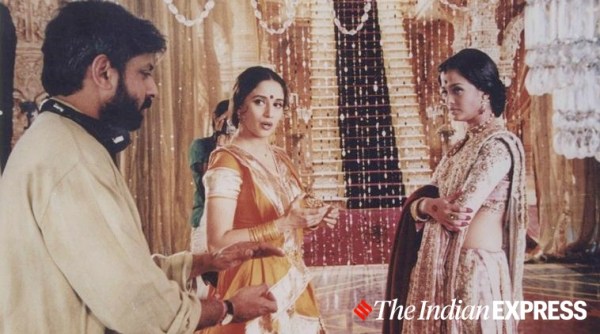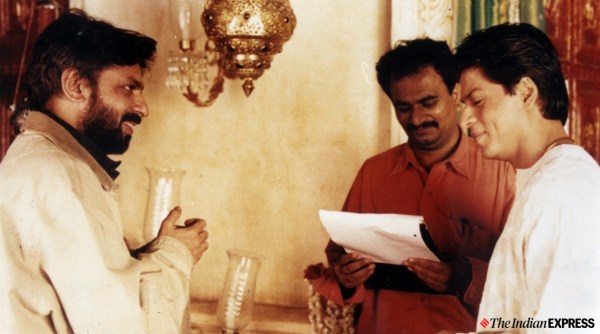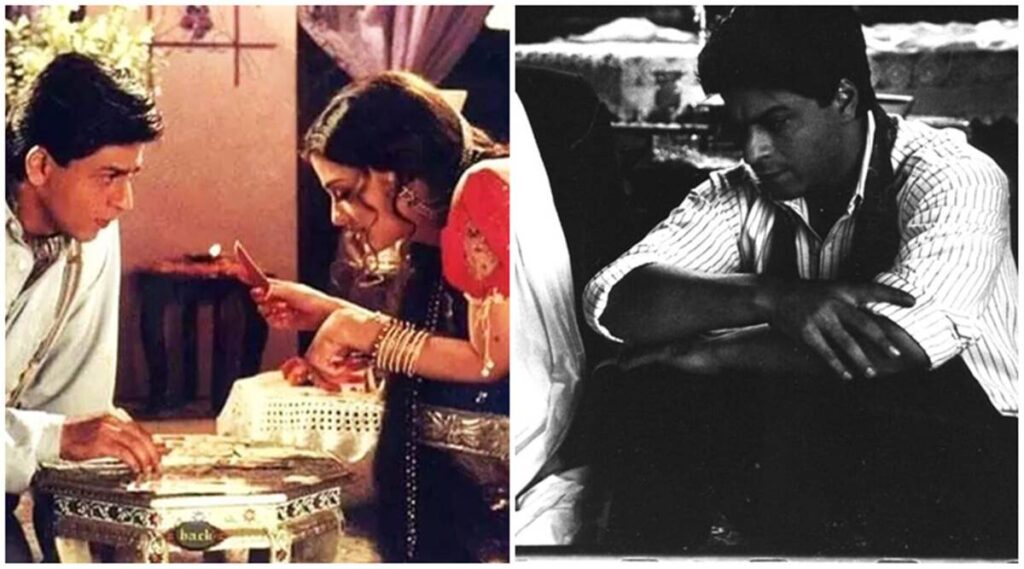On the occasion of its 20th anniversary, here is looking at the magic of Sanjay Leela Bhansali’s Devdas, classified by TIME magazine as one of the ’10 Best Films of the Millennium’.
At the time of its release, Sanjay Leela Bhansali’s Devdas had a lot of epithets to its name. It was the most expensive Indian film ever made. It was the first Indian film to premiere at Cannes out of competition, and who can forget Shah Rukh Khan and Aishwarya Rai appearing on the red carpet in a horse drawn carriage. Meanwhile, trade analysts across the country commented how big a gamble Bhansali was making with a film of this stature and expanse.
Eventually when the film premiered at Cannes and released in India, critical reception was lukewarm to negative. While most praised the direction, production values and the lead performances, many national and international critics outright panned the film for its melodramatic style and over-the-top approach to the subject. But what did remain an unanimous opinion among everyone was the sheer audacity of the vision of the director. By the time the film ended its theatrical run, it had divided the audience in the middle — while many hated the film and tagged it the worst work of the director, others lauded it as the work of an eccentric genius. But the one thing that no one, haters and lovers alike, could not deny was that this film marked the arrival of an artist with a vision that was unapologetically audacious and beyond daring.  Sanjay Leela Bhansali, Madhuri Dixit and Aishwarya Rai on the set of Devdas. (Photo: Express Archive)
Sanjay Leela Bhansali, Madhuri Dixit and Aishwarya Rai on the set of Devdas. (Photo: Express Archive)
In 2012, Richard Corliss of the TIME magazine included Devdas in a list of 10 Best Films of the Millennium. Although it failed to garner an Academy Award nomination (the previous year Lagaan had garnered India its third, and so far last, Foreign Language nomination) it did get nominated for the BAFTA for Best Film Not In the English Language. Back home, it won a slew of National and Filmfare Awards. Even till date, a rerun of the film on Star Gold generates polarising opinions on the dinner table. While one set of people are going to be awed by the production values, another set is going to be blown away by Madhuri Dixit’s stunning performance, while there would most definitely be one set of people who will diss the films on being an exercise in laborious viewing. But even today, the legacy of this film continues to thrive and one must absolutely ask why.
In a 2010 interview with Rituparno Ghosh, Shobha De had commented on the West’s most common perception of Indian cinema as that of a famine struck Bengal. Ghosh, who had incited the conversation had quickly quipped in by saying that for a film industry which every year generates content along the lines of Singh is King, is it merely a convenient choice made by the West – who chooses to appropriate a singular image of poverty for an entire nation? De acquiesced to the same, saying that it arose from an active need of the West to associate a certain sense of poverty and idea of destitution with the developing third world. But, she also added quickly in countries which are characterised by cold and harsh winters, the idea of warm emotions in these over the top family dramas and entertainers is also deeply appealing. Her interactions with several middle aged women in the West had resulted in them confessing that their most loved scenes from Singh Is King was Katrina Kaif resting her head on Kirron Kher’s knees. “That is the warmth that they yearn for”, said De.
Which explains the success of films like Kabhi Khushi Kabhie Gham among a diasporic audience in the early 2000s. With more and more people choosing to migrate, the vibrancy of films which make the colours and flavours of our local cultures not as much an aesthetic choice as much as a pivotal character trait of the film – became a convenient selling point for film-makers in India. Karva Chauth was no longer an addition to the narrative. It was a necessary narrative device. The idea of a Mother India as the avenging mother figure, combined with the effective format of a classical musical and poverty aesthetics, followed by the idea of Bombay slums – captured through the cinema verite style of early Mira Nair films, largely appealed to the American audiences who voted for these films to get nominated at the Oscars. Lagaan married the commercial format of a musical with a rousing story that spoke to the colonial history of an entire nation – causing it to become a generating point for critical and commercial success. While films by Mrinal Sen, Shyam Benegal and Satyajit Ray became large talking points with their subaltern narratives, even today it is the larger commercial format films that Western audiences identify with. For them the former is art, but the latter is cinema that signifies a cultural ethos.  Sanjay Leela Bhansali’s Devdas starring Shah Rukh Khan released 19 years ago. (Photo: Express Archives)
Sanjay Leela Bhansali’s Devdas starring Shah Rukh Khan released 19 years ago. (Photo: Express Archives)
Devdas walked right into the trappings of this expectation. It used a classic love story (India’s own Romeo and Juliet if you will) and placed India’s biggest romantic male sensation and deconstructed his super-star persona to bring to life the character of an obsessed, self-destructive lover figure. It also used one of the greatest beauties of our times as a coveted object of desire, and one of the greatest dancers in our cinema history to play the archetype of the pining courtesan with a golden heart. As the actors themselves have pointed out, it might have been Sarat Chandra Chattopadhyay’s novel but this was Bhansali’s story from beginning to end.
Architects were specifically hired to make the glass stained mansion of Paro. An artificial lake was constructed to make the brothel of Chandramukhi. Yards of walls were dyed in red to enhance the sense of claustrophobia in Paro’s second mansion. Different raags were used across the nine songs in the music album of the film – which covered an entire gamut of emotions and rasas. Costumes were heavily colour coded across the length of the film – and who can forget the climax of the film with Aishwarya Rai running towards a dying Shah Rukh Khan, dressed in a stark white. All in all, an operatic vision was pumped into the soul of a story that had captured hearts for over a hundred years. Even if storms were raging at the slightest injustice and rains came gushing down the heavens at the first flush of romance, the emotions were palpable and familiar.
There was the idea of an undying love, obsession, thwarted love, unrequited love and finally the sentiment of pining. In a generation of films where the diasporic hero came all the way home to get the approval of the family of the woman he loved (Dilwale Dulhania Le Jayenge), where a young man slapped his best friend in public for making fun of his relationship with an older woman (Dil Chahta Hai) – there came a film which deconstructed national models of stardom and painted a picture of thwarted and obsessive love. Not since Pakeezah had a courtesan and her unrequited love affair captured the imagination of common public. While Darr made the figure of the obsessive lover too difficult to digest, because who can ever imagine the Khan of all seasons as a creepy stalker, Devdas legitimised the figure of the obsessed lover. This time around there was no resorting to physical violence, the violence was emotional. Obsession was answered by pining and self-destruction – and in a generation that was transitioning into a global world of technology – older Indian traditions of nautankis and rasas were brought back to the mainstream.
Pining became fashionable again and requited romances were not enough anymore. There had to be a sense of excess, a sense of decadence, a sense of campy extravagance that was aesthetically queer in its structure. The idea that at ten years of age, a film this polarising could be classified as one of the best ten of the millennium, means that within its body the film carried an essential quality that was universally resonant. For the West, it was India being Indian at a level India had never been Indian before – to put it in a certain way.
It had the resonance of the set pieces of the musicals from Hollywood’s own studio era Golden Age, but coupled with the warmth of Indian melodrama. But it also tackled issues not easily romanticised in mainstream cinema – and presented a picture of colonial prosperity not familiar to the West. Colonial India was no longer the famine-struck rural site of Pather Panchali or the caste-ridden oppression of Ankur. It was an image of prosperity and emotional abundance.
20 years ago, the appearance of Devdas on the scene marked the birth of a true cinematic genius, Indian cinema’s Renaissance Man. The only time his madness matched that of his Devdas days was when he painted his whole world blue while making Saawariya. Here was a man who had nothing to give for those who did not realise his need to tell stories at such a sweep and scale. 20 years ago a bona-fide cinema classic was made and a star was born.

Source:indianexpress.com

